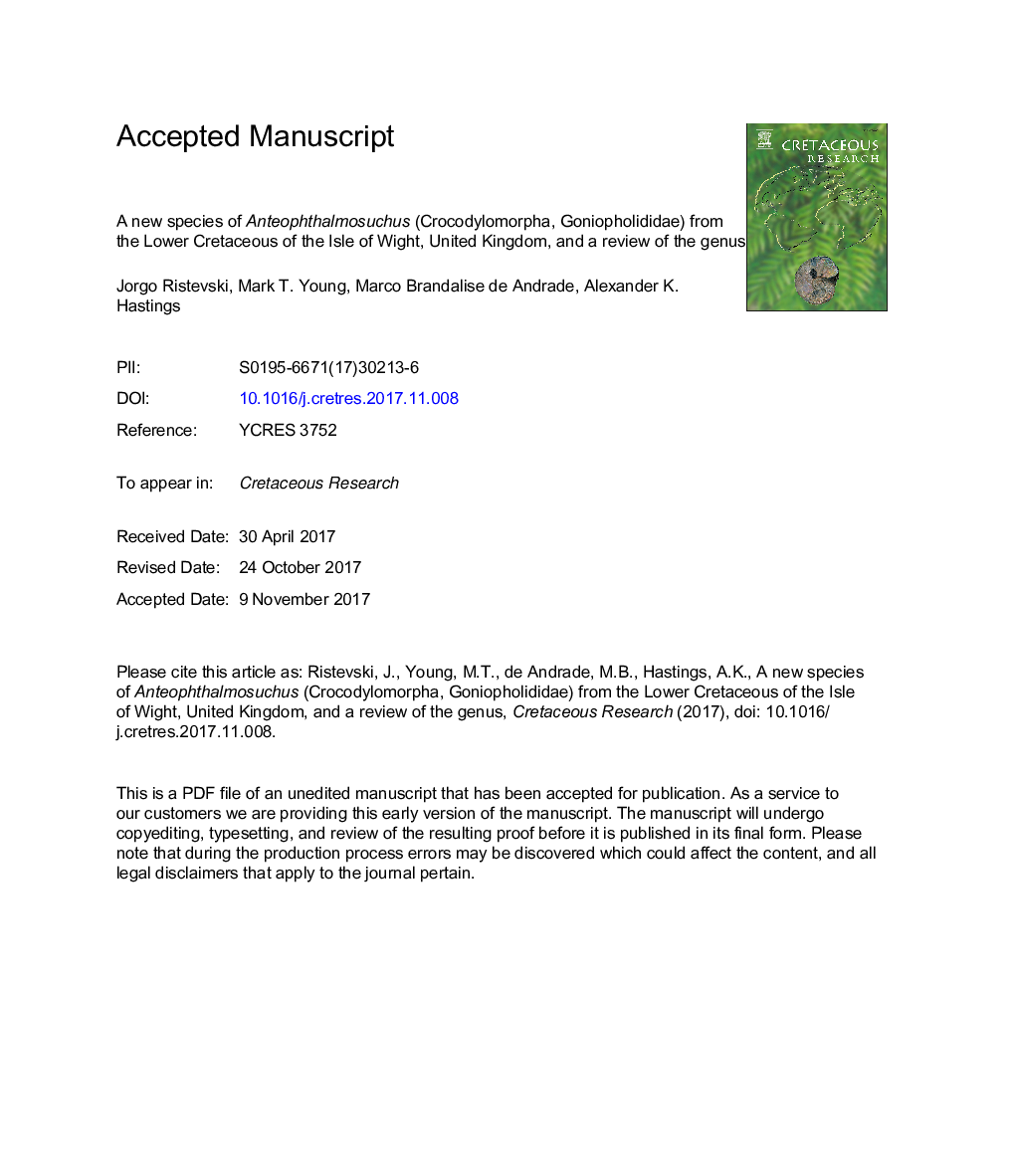| Article ID | Journal | Published Year | Pages | File Type |
|---|---|---|---|---|
| 8916373 | Cretaceous Research | 2018 | 130 Pages |
Abstract
A new species of goniopholidid crocodyliform, Anteophthalmosuchus epikrator sp. nov., is herein described based on two specimens from the Wessex Formation of the Isle of Wight, UK. These specimens were previously referred to the type species Anteophthalmosuchus hooleyi. In addition, we provide a comprehensive redescription of the A. hooleyi holotype. The new species has several skull table and iliac morphological characteristics that distinguish it from A. hooleyi, such as: sub-square supratemporal fossae; thicker iliac crest that is not positioned low at the anterior iliac margin; absence of a bulge formed by the anterior convergence of the iliac and supraacetabular crests; a 'wasp-waisted' postacetabular process; and, a comparatively deeper acetabular fossa. The evolutionary relationships of A. epikrator were assessed in phylogenetic analyses that affirmed its status as a distinct species that is closely related to A. hooleyi. An additional Anteophthalmosuchus specimen from Belgium, the so called 'Dollo's goniopholidid', recently assigned to A. hooleyi is here referred to A. epikrator, based on the shared autapomorphies, and moreover, the results from the phylogenetic analyses which confirm the 'Dollo's goniopholidid' close affinity with the new species. Intriguingly, two of our cladistic analyses yielded a paraphyletic Anteophthalmosuchus in regards to the Spanish Anteophthalmosuchus species, A. escuchae, which was recovered forming a trichotomy with Hulkeopholis spp. The exclusion of A. escuchae from the cladistic analysis not only restored the monophyletic status of Anteophthalmosuchus, but also resolved previously found unsettled relationships within Goniopholididae. The most likely reason for this puzzling phylogenetic outcome is the relatively fragmentary nature of the Spanish Anteophthalmosuchus specimens, therefore, necessitating further study of new material in order to help elucidate its taxonomic relationships.
Related Topics
Physical Sciences and Engineering
Earth and Planetary Sciences
Palaeontology
Authors
Jorgo Ristevski, Mark T. Young, Marco Brandalise de Andrade, Alexander K. Hastings,
